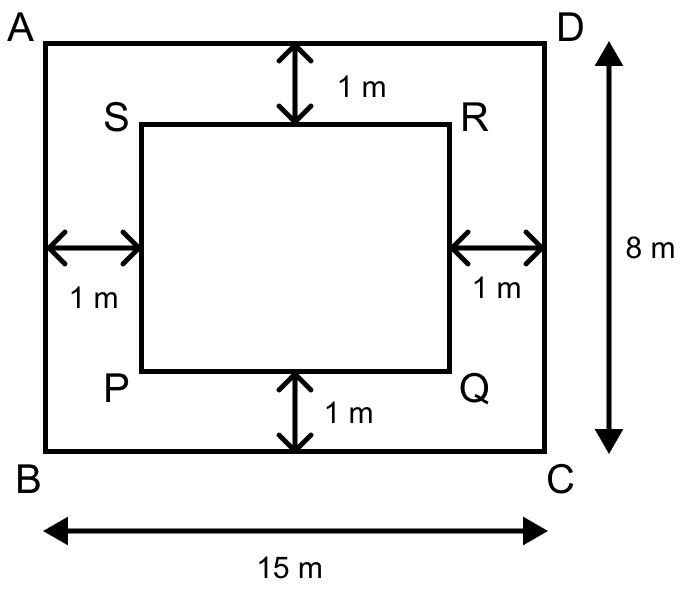Mathematics
A rectangular floor which measures 15 m × 8 m is to be laid with tiles measuring 50 cm × 25 cm. Find the number of tiles required. Further, if a carpet is laid on the floor so that a space of 1 m exists between its edges and the edges of the floor, what fraction of the floor is uncovered?
Mensuration
85 Likes
Answer
Let ABCD be the rectangular floor and PQRS be the carpet.

Area of floor = l × b = 15 × 8 = 120 m2 = 120 × (100 cm)2 = 1200000 cm2
Area of a tile = 50 cm × 25 cm = 1250 cm2
No. of required tiles =
Substituting the values we get,
No. of required tiles = = 960.
From figure,
Length of carpet (PQ) = 15 – 1 – 1
= 15 – 2
= 13 m
Breadth of carpet (QR) = 8 – 1 – 1
= 8 – 2
= 6 m
Area of carpet = l × b
= 13 × 6
= 78 m2.
Area of floor which is uncovered by carpet = Area of floor – Area of carpet
= 120 – 78
= 42 m2
Fraction of floor uncovered =
= .
Hence, number of tiles required to cover the floor = 960 tiles and is the fraction of floor uncovered.
Answered By
33 Likes
Related Questions
A foot path of uniform width runs all around the inside of a rectangular field 50 m long and 38 m wide. If the area of the path is 492 m2, find its width.
The cost of enclosing a rectangular garden with a fence all around at the rate of ₹ 150 per metre is ₹ 54,000. If the length of the garden is 100 m, find the area of the garden.
The width of a rectangular room is of its length metres. If its perimeter is metres, write an equation connecting and . Find the floor area of the room if its perimeter is 32 m.
A rectangular garden 10 m by 16 m is to be surrounded by a concrete walk of uniform width. Given that the area of the walk is 120 square metres, assuming the width of the walk to be x, form an equation in x and solve it to find the value of x.